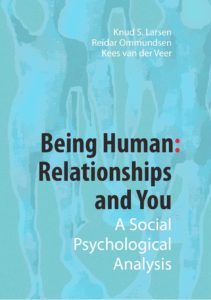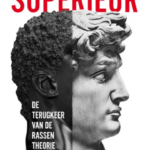What Will Be The Long-Term Development Of The Population Of The German Reich After The First World War? – Introduction and Abstract
General Introduction
The 1920’s and 1930’s are among the most interesting periods in the history of modelling and forecasting. The continuous decline of Western birth rates in the inter-war period set alarm bells ringing. Concerns about the future size and growth of the populations of these nations were heightened by long-term extrapolations of time series, and by population projections and population forecasts. Concerns turned to acute anxiety after it became to appear that the leading Western European nations would not replace their populations. The imminent population decrease threatened to diminish the relative power of what were called in those days the ‘civilized’ nations and ultimaltely to result in ‘race suicide’ (the extinction of populations).
In some countries statisticians, demographers, or economists developed population projection methodology in order to free current debates on the population issue from emotional, subjective argument. In the two leading Fascist countries – but in other countries as well – population numbers were seen as the key to economic, political and military strenght. Read more
Wie wird sich die Bevölkerung des Deutschen Reiches langfristig nach dem Erstem Weltkrieg entwickeln?
Die ersten amtlichen Bevölkerungsvorausberechnungen in den 1920er Jahren.

Problemstellung
Nach dem Ende des Ersten Weltkriegs rückten die demografischen Veränderungen in den Kriegs- und Nachkriegsjahren in das Zentrum der öffentlichen Debatten. Gegenstand statistischer Analysen bildeten die Geburtenausfälle in den Jahren 1914 bis 1919, die Übersterblichkeit der männlichen Bevölkerung und die Entstehung des Frauenüberschusses, die den Altersaufbau der Reichsbevölkerung nach dem Weltkrieg prägten. Hinzu kamen die Bevölkerungsverluste, die aus der territorialen Neugliederung des Deutschen Reichs in Folge der Umsetzung des Friedensvertrages von Versailles entstanden.1 Das Statistische Reichsamt stellte sich zur Aufgabe, die Verwerfungen in der Alters- und Geschlechtsstruktur als auch die bereits vor dem Weltkrieg eintretenden Veränderungen im Geburtenverhalten zu untersuchen und deren langfristige Auswirkungen auf die Bevölkerungsdynamik zu berechnen. Binnen vier Jahren erstellte das Statistische Reichsamt zwei demografische Vorausberechnungen über die künftige Bevölkerungsentwicklung und -struktur für das Territorium des Deutschen Reiches nach 19192 (Statistik des Deutschen Reichs, 316, 1926 und Statistik des Deutschen Reichs, 401, II, 1930). Die Grundlage für diese ersten zwei amtlichen Vorausberechnungen boten die Ergebnisse der Volkszählungen der Jahre 1910, 1919 und 1925.
Es wurden weitere statistische Erhebungen und Ergebnisse zur natürlichen Bevölkerungsbewegung im Deutschen Reichsterritorium nach dem Erstem Weltkrieg hinzugenommen (Statistik des Deutschen Reichs, 276, 1922; Statistik des Deutschen Reiches, 316, 1926; Statistik des Deutschen Reiches, Sonderhefte zu Wirtschaft + Statistik, 5, 1929, Statistik des Deutschen Reichs, 360, 1930, Statistik des Deutschen Reiches, 401, I +II, 1930).
In der ersten 1926 erschienenen Vorausberechnung wurde die Entwicklung der Bevölkerungsdynamik und -struktur für einen Zeitraum von 50 Jahren (1925 bis 1975) und in der zweiten, 1930 erschienen, für einen Zeitraum von 75 Jahren (1930 bis 2000) und darüber hinaus erstellt.3 Nahe zeitgleich hier zu erarbeitete der Bevölkerungsstatistiker Friedrich Burgdörfer (1890-1967) eine weitere demografische Vorausberechnung.4 Read more
The Innovation of Population Forecasting Methodology in the Inter-war Period: The Case of the Netherlands
 4.1 Introduction
4.1 Introduction
The foundations of the model of population dynamics that was to dominate population forecasting methodology throughout the greater part of the 20th century were laid by the English economist Edwin Cannan (1861-1935). By the end of the 1930s, it had become the new standard model for forecasting national populations. After the Second World War, the model became known as the Cohort-Component Projection Model (CCPM).[i]
However, this does not mean that the introduction and general acceptation of the new methodology was a matter of veni, vidi, vici. On the contrary, almost three decades passed between its emergence in 1895 and its reinvention and general application for national population forecasting purposes in the mid-1920s.
Read more
Being Human: Attraction And Relationships ~ The Journey From Initial Attachments To Romantic Love
December 2018: Being Human. Relationships and You will be published completely online soon: Being Human – Contents
Many years ago two boys were walking home from school. They were seven years old, lived in the same neighborhood, but went to different grade schools. Although living close to each other they had not met before running into each other on this day on the road leading up the hill to their neighborhood. Both seemed quite determined to assert themselves that day, and soon they began pushing each other that gradually turned to wrestling, and attempts to dominate. After what seemed hours, the two little boys were still rolling down the surrounding hills as the sun was going down. Neither succeeded in achieving victory that day. In fact, they never again exchanged blows but became the best of friends. Today it is more than 50 years later, and their friendship has endured time and distance. Friendship is like a rusty coin; all you need to do is polish it at times!
In this essay we shall examine the research on attachment, attraction and relationships. The intrinsic interest in these fields by most people is shared by social psychologists, and attachment, attraction, and love relationships constitute one of the most prolific areas of investigation in social psychology. The early attachment theory advanced by Bowlby (1982) emphasized the importance of the field when he suggested that our attachments to parents to a large extent shape all succeeding relationships in the future. Other research focus on exchange and communal relationships and point to the different ways we have of relating to each other. The importance of relationships cannot be overemphasized since we as humans have a fundamental need to belong. Relationships also contribute to the social self as discussed in the book, and effects social cognition discussed in the same (see: at the end of this article). The variables that determine attraction may be understood theoretically as functions of a reward perspective.
The importance of relationships is demonstrated by findings that show that among all age groups relationships are considered essential to happiness (Berscheid, 1985; Berscheid & Reis, 1998). The absence of close relationships makes the individual feel worthless, powerless, and alienated (Baumeister & Leary, 1995; Stroebe & Stroebe, 1996). Our very humanity is defined by our relationships (Bersheid & Regan, 2005).
1. Attachment: The start to relationships
This chapter is about the development of attachment, intimate relationships between adults, and the road leading toward love relationships. No greater love has a person than giving his life for another. This idea from the Bible brings to mind the passion of deep commitment and the willingness to sacrifice, even in the ultimate sense. This willingness to sacrifice is one manifestation of love, but as we all know there is much more to relationships and love.
The research described in the following pages concerns early attachment, and attraction and love between adults. These relationships may be institutionalized by marriage, or (registered) partnership, or take some other form (living-apart-together) in relationships. Since the vast majority of romantic relationships exist between heterosexual partners we describe the journey from attraction to romantic relationship from this perspective. There is little research so there is no way to know, however, there is no convincing reason to assume that this journey is completely different for homosexuals.
Most people will experience the delirious feelings of infatuation and love sometime in their lives. What is love? How can we achieve love? And how can we build these feelings into lasting relationships? Are there ways we can improve our chances for satisfying long-lasting and happy relationships? This chapter will show that there are behaviors to avoid, but that we can also contribute much to lasting attachments. Long-lasting romance depends on positive illusions and bringing novelty and renewal to our intimate relationships.
Generational walks in Doorn and other educational projects
Life histories
Explanatory notes
Many pre-university pupils and students attending higher vocational education study generations. They write papers on this topic, often supplementing them nowadays with video reports. Social studies, history, economics and management, particularly, lend themselves to theses and graduation papers on generations.
Most students write papers on the life histories of members of generations. This practice is known as a ‘life history approach’, which is habitually used in historical sciences and sociology. Several chapters in Generations of Lucky Devils and Unlucky Dogs contain examples of this approach.
Because this book, Generations of Lucky Devils and Unlucky Dogs, will likely inspire many pupils to learn about generations during their studies some examples are provided here, the first being interviews with seniors of the Pre-War Generation and the Silent Generation. What was their childhood like and how did their formative years affect the rest of their lives? What impressions have they retained of the ‘Cultural Revolution’ of the late 1960s and early 1970s? How did they benefit from the economically favourable 1990s and how did they prepare themselves for their retirement years?
A second example is interviews with women concerning their experience with discrimination against women. Members of the Pre-War and Silent Generations suffered serious discrimination on the employment market. Take, for instance, women in public service who automatically lost their job upon getting married. One of the radical effects of the ‘Cultural Revolution’ is the strongly reduced discrimination against women, although it is still not entirely eradicated even in the year 2011.
The Return of the Underground Retail Cannabis Market?
Attitudes of Dutch coffeeshop owners and cannabis users to the proposed ‘cannabis ID’ and the consequences they expect.
ABSTRACT
The sale of cannabis to persons aged 18 or older is permitted in the Netherlands under certain conditions in commercial establishments called coffeeshops. The present Dutch government has proposed that access to coffeeshops be restricted to persons holding a cannabis ID, a mandatory membership card known colloquially as a ‘weed pass’ (wietpas). Recent interviews with 66 Amsterdam coffeeshop owners reveal that they expect mainly detrimental effects from the proposed measure. In particular, they predict customer resistance to compulsory registration, the discriminatory exclusion of tourists and other non-members, and a resurgence of cannabis street dealing. Two surveys of cannabis users (in a local sample of 1214 Amsterdam coffeeshop customers and a nationwide sample of 1049 last-month users) confirmed that many, but not all, users would oppose registration. The majority of respondents intended to look for other suppliers or to grow their own marijuana if the cannabis ID becomes law. Surprisingly, about one in ten said they would stop smoking cannabis.
Read more






